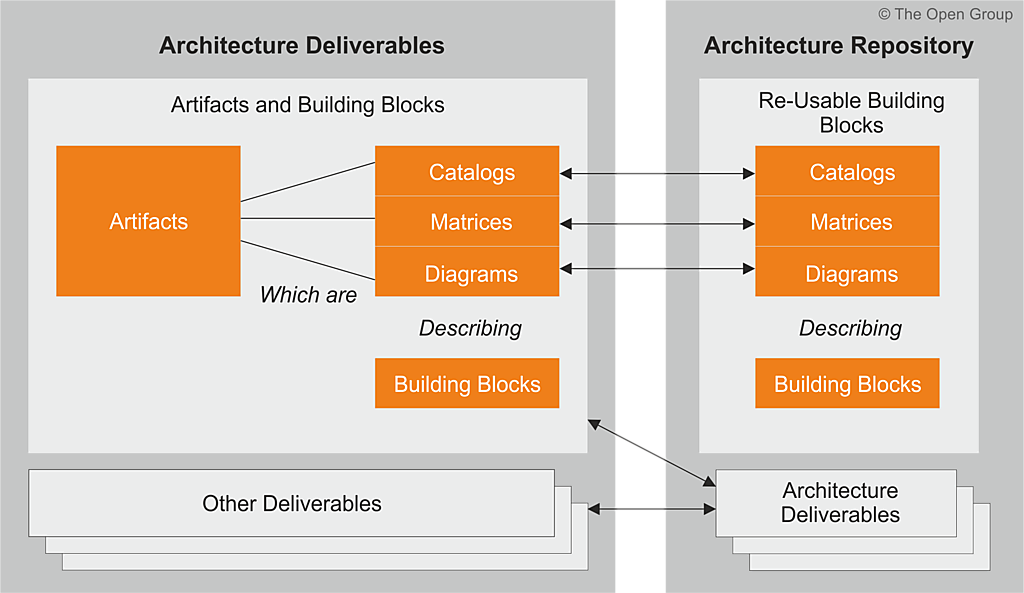Introduction:
In the ever-evolving realm of architecture, precision and clarity are paramount. Architects navigate a complex landscape of ideas, designs, and solutions to bring forth structures that stand as testaments to human ingenuity. Amidst this creative whirlwind, the Architecture Content Framework emerges as a guiding beacon—a meticulously crafted model that brings order to the chaos, defining the anatomy of architectural work products.

Understanding the Framework:
At its core, the Architecture Content Framework serves as a comprehensive model, delineating the intricate details of architectural work products. These products encompass deliverables, artifacts within those deliverables, and the crucial Architecture Building Blocks (ABBs) that these deliverables represent.
- Deliverables:
Deliverables form the backbone of architectural work, representing the tangible outcomes of the creative process. These encompass a diverse range of items, from conceptual blueprints to exhaustive documentation. The Architecture Content Framework provides a structured approach to defining and categorizing these deliverables, ensuring that each facet of the architectural journey is captured and accounted for.
- Artifacts within Deliverables:
Within each deliverable lies a treasure trove of artifacts—individual components that collectively contribute to the overarching design. These artifacts can range from design specifications and prototypes to detailed diagrams and documentation. The Architecture Content Framework meticulously identifies and classifies these artifacts, offering architects a roadmap to navigate the nuanced landscape of their creations.
- Architecture Building Blocks (ABBs):
Central to the Framework are the Architecture Building Blocks (ABBs), the elemental components that give form and substance to deliverables. ABBs are the essential building units of an architectural design, representing key concepts, functions, or structures. The Framework provides a methodical approach to understanding, organizing, and utilizing ABBs, allowing architects to weave intricate and cohesive narratives through their work.
Benefits of the Architecture Content Framework:
- Clarity and Consistency:
- The Framework establishes a common language and structure, promoting clarity and consistency across architectural endeavors.
- Architects can communicate ideas more effectively, fostering a shared understanding among team members and stakeholders.
- Efficient Workflow:
- By delineating the hierarchy of deliverables, artifacts, and ABBs, the Framework streamlines the architectural workflow.
- Architects can navigate the creative process with greater efficiency, focusing on the development of key building blocks.
- Enhanced Collaboration:
- A standardized model facilitates collaboration among diverse teams and disciplines within the architectural domain.
- Teams can seamlessly integrate their contributions, ensuring a harmonious convergence of ideas and expertise.
Conclusion:
In the intricate tapestry of architectural creation, the Architecture Content Framework emerges as a foundational tool—an indispensable guide that brings order to complexity. By providing a detailed model of architectural work products, from deliverables to ABBs, the Framework empowers architects to translate their visions into tangible, coherent structures. In embracing this framework, architects embark on a journey marked by clarity, efficiency, and collaborative brilliance, shaping the skylines of the future with precision and purpose.